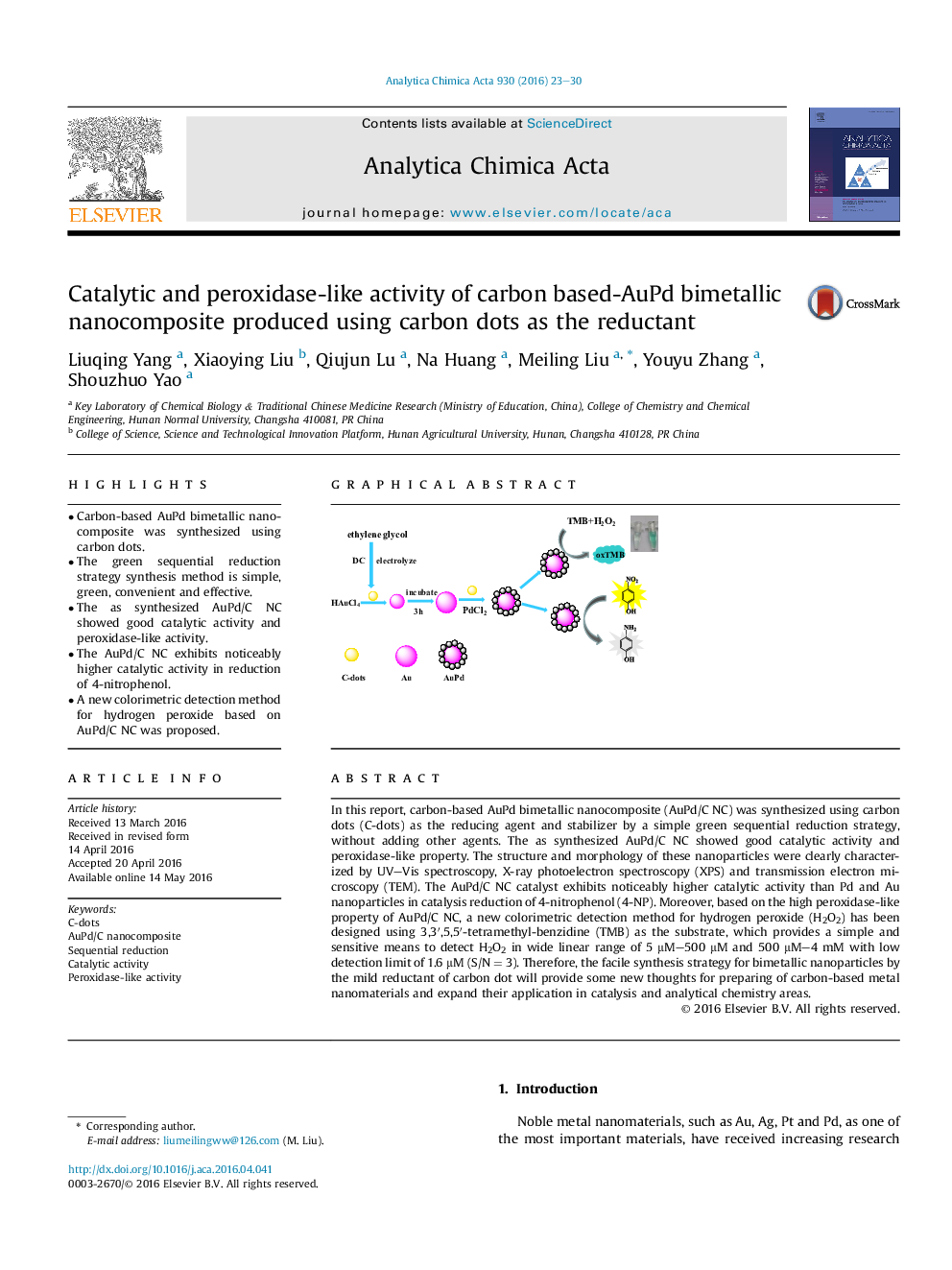| Article ID | Journal | Published Year | Pages | File Type |
|---|---|---|---|---|
| 1162756 | Analytica Chimica Acta | 2016 | 8 Pages |
•Carbon-based AuPd bimetallic nanocomposite was synthesized using carbon dots.•The green sequential reduction strategy synthesis method is simple, green, convenient and effective.•The as synthesized AuPd/C NC showed good catalytic activity and peroxidase-like activity.•The AuPd/C NC exhibits noticeably higher catalytic activity in reduction of 4-nitrophenol.•A new colorimetric detection method for hydrogen peroxide based on AuPd/C NC was proposed.
In this report, carbon-based AuPd bimetallic nanocomposite (AuPd/C NC) was synthesized using carbon dots (C-dots) as the reducing agent and stabilizer by a simple green sequential reduction strategy, without adding other agents. The as synthesized AuPd/C NC showed good catalytic activity and peroxidase-like property. The structure and morphology of these nanoparticles were clearly characterized by UV–Vis spectroscopy, X-ray photoelectron spectroscopy (XPS) and transmission electron microscopy (TEM). The AuPd/C NC catalyst exhibits noticeably higher catalytic activity than Pd and Au nanoparticles in catalysis reduction of 4-nitrophenol (4-NP). Moreover, based on the high peroxidase-like property of AuPd/C NC, a new colorimetric detection method for hydrogen peroxide (H2O2) has been designed using 3,3′,5,5′-tetramethyl-benzidine (TMB) as the substrate, which provides a simple and sensitive means to detect H2O2 in wide linear range of 5 μM–500 μM and 500 μM–4 mM with low detection limit of 1.6 μM (S/N = 3). Therefore, the facile synthesis strategy for bimetallic nanoparticles by the mild reductant of carbon dot will provide some new thoughts for preparing of carbon-based metal nanomaterials and expand their application in catalysis and analytical chemistry areas.
Graphical abstractFigure optionsDownload full-size imageDownload as PowerPoint slide
